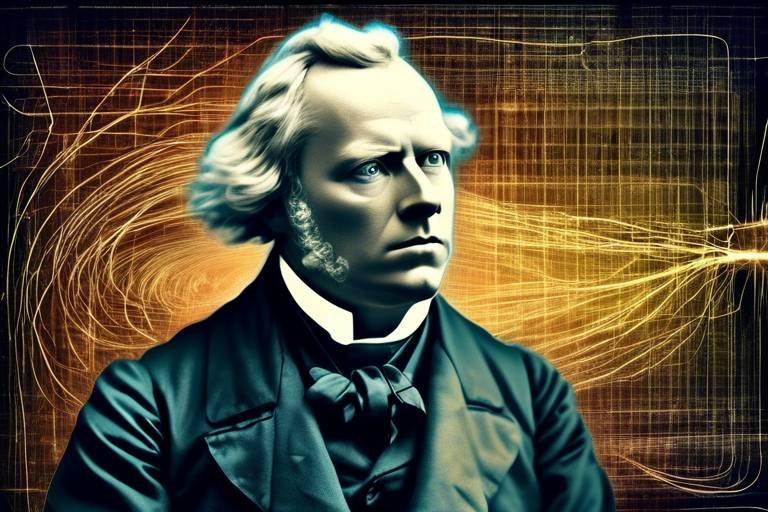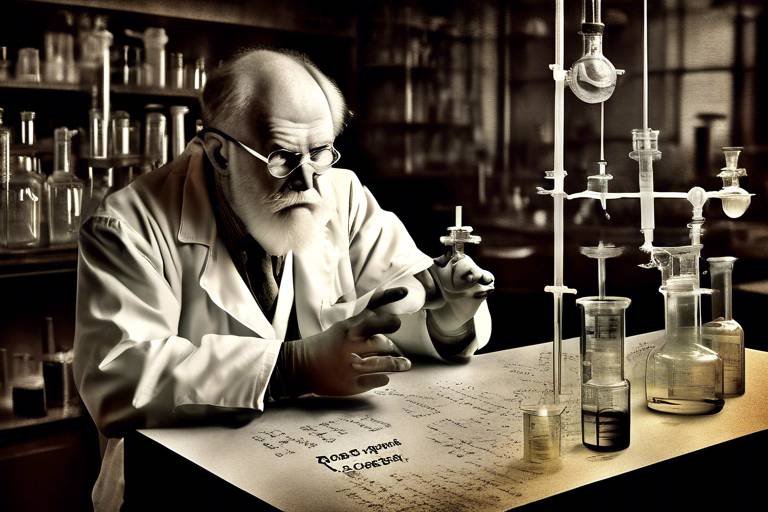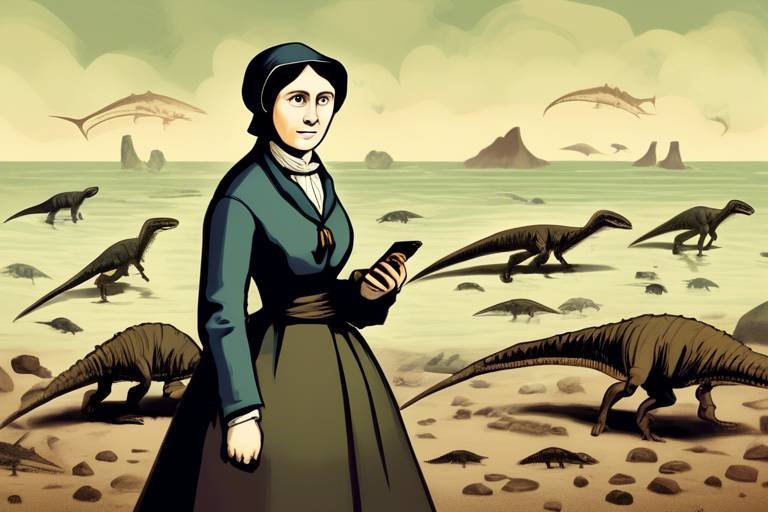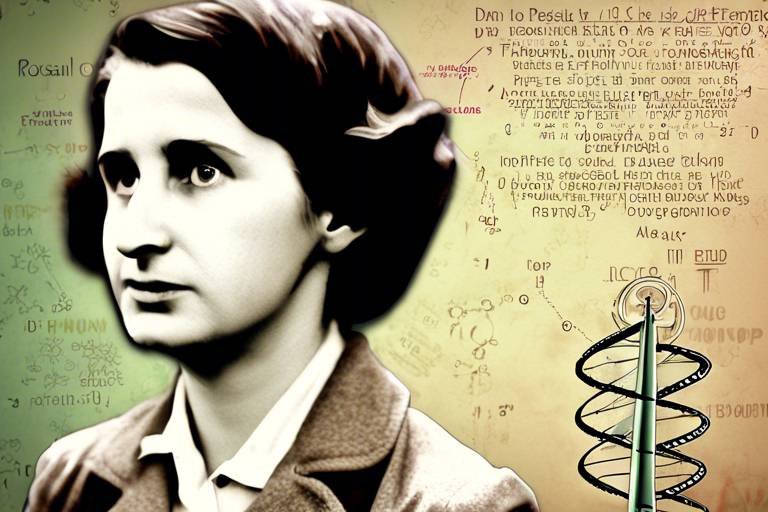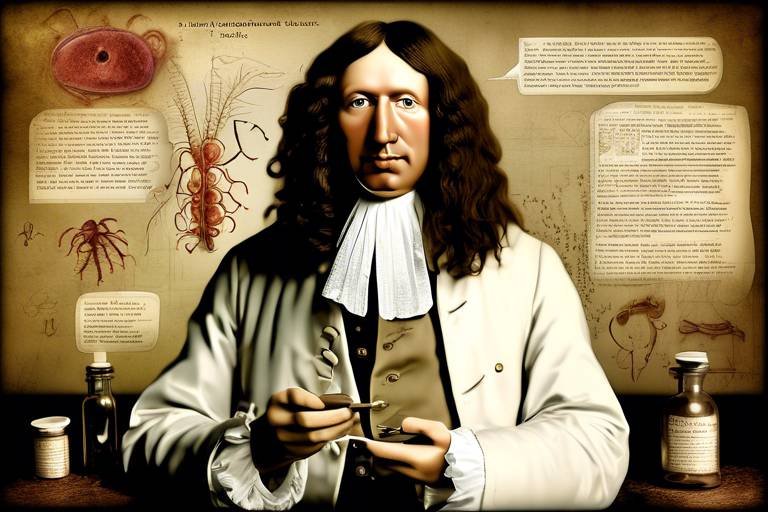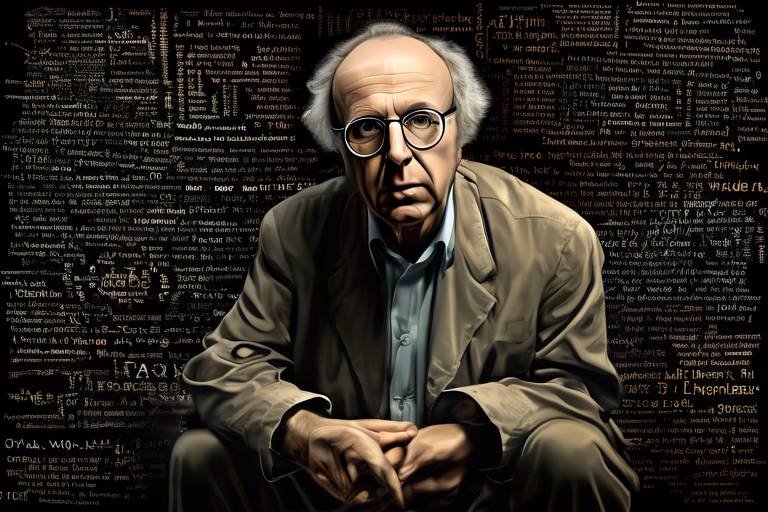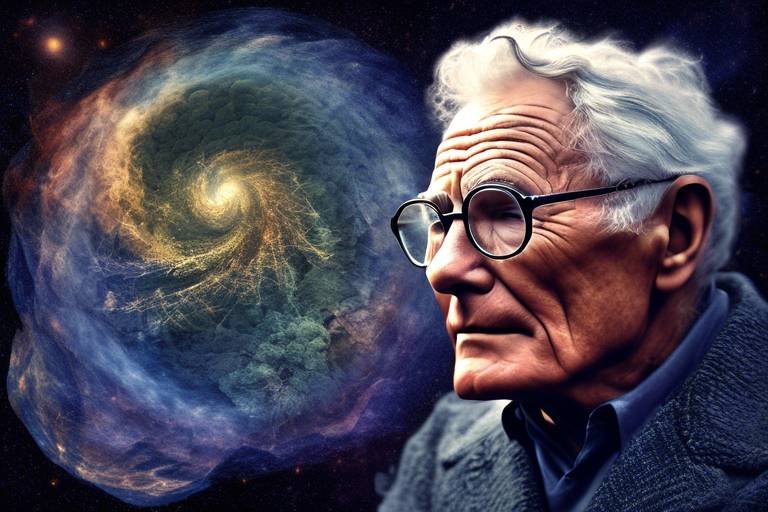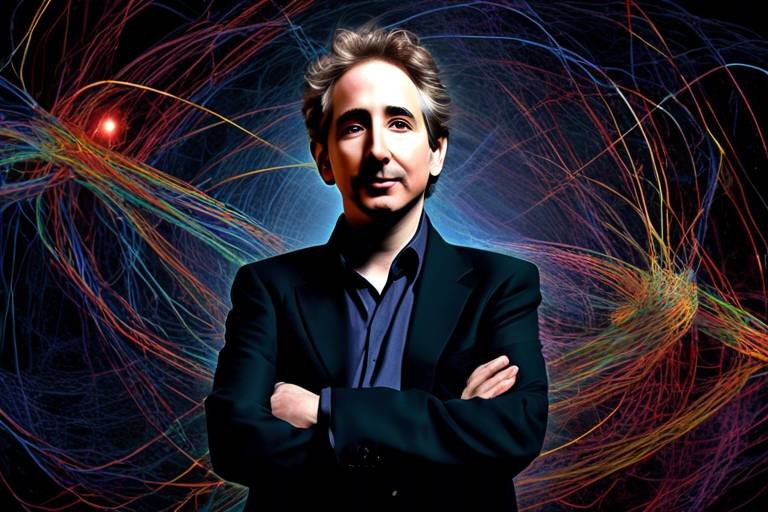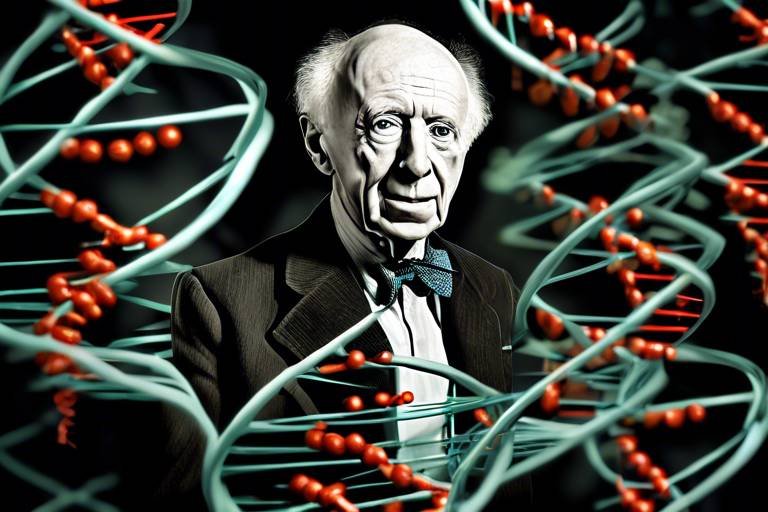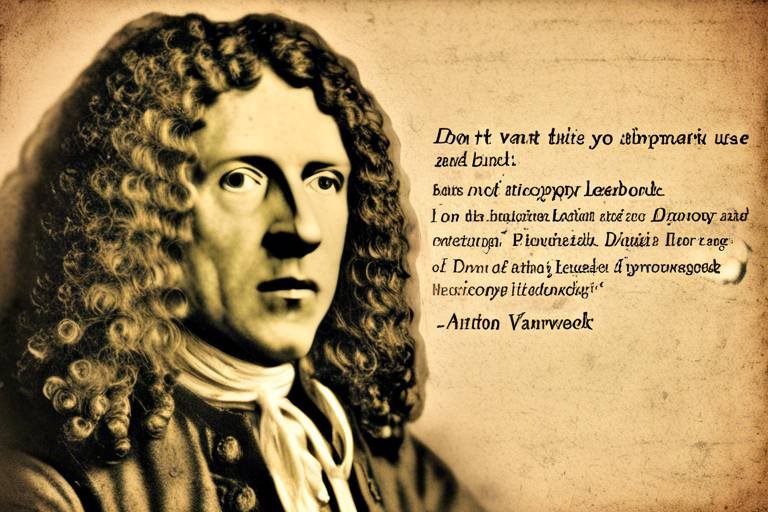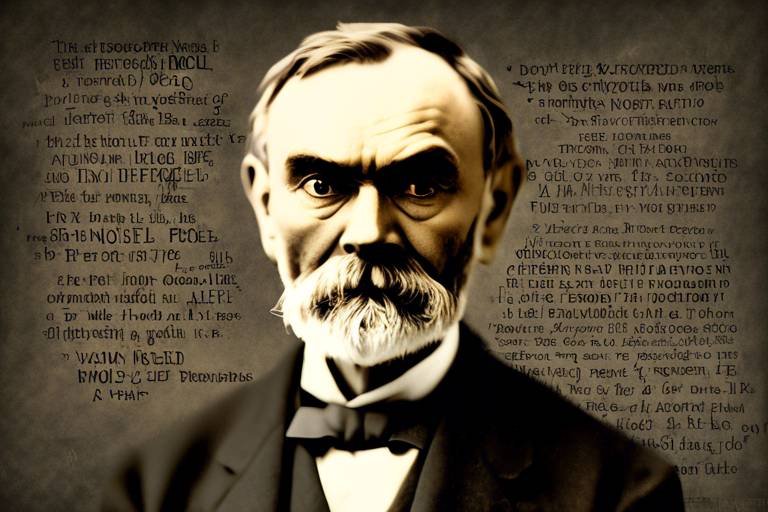The Contributions of Edward Jenner to Vaccination
Edward Jenner, often hailed as the father of vaccination, made a remarkable impact on public health with his pioneering work in the late 18th century. His innovative approach to preventing smallpox—a disease that had plagued humanity for centuries—transformed the landscape of medicine and laid the groundwork for modern immunology. Imagine a world where smallpox was a common occurrence, claiming lives indiscriminately; this was the reality before Jenner stepped onto the scene. His groundbreaking development of the smallpox vaccine not only saved countless lives but also instilled a sense of hope and safety in communities worldwide. Jenner's contributions were not merely scientific; they represented a monumental shift in how society approached disease prevention, emphasizing the importance of vaccination as a tool for safeguarding public health.
Before diving into Jenner's remarkable achievements, it's crucial to understand the historical backdrop against which he worked. The late 1700s were marked by a devastating smallpox epidemic that wreaked havoc across Europe and beyond. Smallpox was not just a disease; it was a relentless killer that left survivors scarred and traumatized. The need for effective disease prevention methods was urgent, and existing practices, such as variolation, were fraught with risks. Variolation involved exposing individuals to smallpox in a controlled manner, but it often resulted in severe complications or even death. In this tumultuous environment, Jenner's innovative thinking began to take shape, leading to a revolutionary approach that would change the course of medicine forever.
Edward Jenner was born in 1749 in the quaint village of Berkeley, England. From a young age, he exhibited a keen interest in the natural world, often observing the flora and fauna around him. His early education was influenced by local physicians, who ignited his passion for medicine. After apprenticing with a surgeon, Jenner went on to study at St. George's Hospital in London, where he honed his skills and deepened his understanding of medical science. It was during these formative years that Jenner's innovative spirit began to flourish. He was not just a student of medicine; he was a curious mind eager to explore the uncharted territories of disease prevention.
In 1796, Jenner conducted his most famous experiment, which would ultimately lead to the development of the smallpox vaccine. He had observed that milkmaids who contracted cowpox—a less severe disease—did not seem to catch smallpox. Intrigued by this phenomenon, Jenner hypothesized that exposure to cowpox could provide immunity against smallpox. To test his theory, he took material from a cowpox sore and inoculated a young boy named James Phipps. After the boy recovered from a mild case of cowpox, Jenner exposed him to smallpox, only to find that the boy did not become ill. This groundbreaking experiment demonstrated the principle of vaccination: that exposure to a less harmful virus could confer immunity against a more dangerous one. It was a moment of sheer brilliance that would echo through the ages.
Following his initial experiment, Jenner meticulously refined his methods to develop the smallpox vaccine. His approach was not merely about inoculation; it involved a deep understanding of the body's immune response. Jenner published his findings in 1798, detailing the process and results of his experiments. The scientific principles behind vaccination began to take shape, establishing a foundation for future immunization practices. The smallpox vaccine was not just a medical breakthrough; it was a beacon of hope for a world weary of disease. As people began to recognize the effectiveness of Jenner's work, vaccination started to gain traction as a viable method for disease prevention.
Despite the success of his vaccine, Jenner faced considerable skepticism and resistance from both the medical community and the public. Many were hesitant to embrace this new practice, often viewing it with suspicion. The idea of using material from a cow to prevent a human disease seemed bizarre to some. Critics raised concerns about safety and efficacy, fearing that the vaccine might cause more harm than good. Jenner's unwavering commitment to his work, however, eventually swayed public opinion. He tirelessly advocated for vaccination, demonstrating its benefits through real-world examples and compelling evidence. Over time, the initial skepticism began to fade, and vaccination emerged as a cornerstone of public health.
Jenner's work laid the groundwork for modern immunology and has had profound long-term effects on public health. The smallpox vaccine significantly reduced the incidence of smallpox, ultimately leading to the disease's eradication in 1980—a monumental achievement that stands as a testament to Jenner's vision. His pioneering methods influenced future vaccination efforts, paving the way for vaccines against diseases such as polio, measles, and influenza. The principles established by Jenner continue to guide immunization strategies worldwide, demonstrating the enduring importance of his contributions to global health initiatives.
Edward Jenner's contributions to vaccination have been widely recognized and celebrated. Numerous honors and memorials commemorate his role as the father of immunology and vaccination. His legacy is not only etched in the annals of medical history but also lives on in the countless lives saved through vaccination. Statues, awards, and even the term "vaccination" itself, derived from "vacca," the Latin word for cow, serve as reminders of his groundbreaking work. Jenner's story is a powerful example of how one individual's dedication to science and humanity can change the world.
Today, vaccination practices continue to evolve, building upon the foundation laid by Jenner. The rapid development of vaccines for emerging diseases, such as COVID-19, showcases the enduring relevance of his pioneering work. Modern vaccination strategies emphasize safety, efficacy, and accessibility, ensuring that communities around the globe can benefit from the protection that vaccines provide. Jenner's legacy lives on in every vaccination administered, reminding us of the importance of innovation in the face of disease.
- What was Edward Jenner's major contribution to medicine? Jenner developed the first successful smallpox vaccine, which laid the groundwork for modern vaccination practices.
- How did Jenner conduct his experiments? He inoculated a young boy with cowpox material to demonstrate that it provided immunity against smallpox.
- What impact did Jenner's work have on public health? His work significantly reduced smallpox cases and influenced future vaccination efforts, ultimately leading to the eradication of the disease.
- How is Jenner remembered today? Jenner is celebrated as the father of immunology, with numerous memorials and honors recognizing his contributions to medicine.

The Historical Context of Vaccination
Before we dive into the remarkable contributions of Edward Jenner, it’s essential to understand the world he was stepping into. The late 18th century was a time when smallpox was a dreaded disease, claiming the lives of countless individuals and leaving many more scarred for life. Imagine living in a society where a single cough could lead to a devastating illness, and the only defense was a risky practice known as variolation. This method involved deliberately infecting a person with a mild case of smallpox to induce immunity, but the risks were significant. Many patients would still suffer severe complications, and some would even die. It was a gamble, with uncertain outcomes, highlighting the desperate need for a safer and more effective solution.
During this period, smallpox was not just a disease; it was a societal menace. The World Health Organization estimates that smallpox killed around 300 million people in the 20th century alone. The fear and stigma surrounding the disease were palpable, affecting social interactions and even trade. Communities were on high alert, and the quest for a reliable preventive measure became a priority for physicians and scientists alike. It was in this climate of urgency and despair that Jenner’s groundbreaking ideas began to take shape.
In England, the seeds of vaccination were already being sown. Some folk remedies and practices hinted at the concept of immunity. For instance, milkmaids, who frequently contracted cowpox, were noted to be less likely to catch smallpox. This observation was crucial. It suggested that exposure to a less harmful virus could somehow confer protection against a more lethal one. But how could this be harnessed scientifically? This question would soon lead to Jenner’s revolutionary experiment.
Moreover, the scientific community of the time was beginning to embrace the principles of observation and experimentation. The Enlightenment had ushered in a new era of inquiry, where traditional beliefs were increasingly challenged by empirical evidence. Jenner, influenced by this intellectual climate, sought to apply these principles to medicine. He was not merely a product of his time but a visionary who would forever change the landscape of public health.
To fully appreciate Jenner's achievements, it's also important to consider the global implications of smallpox. The disease did not recognize borders; it wreaked havoc across continents, affecting populations in Africa, Asia, and the Americas. The potential for a universal solution was not just a dream but a necessity. Jenner’s work would eventually lay the groundwork for vaccination practices that would save millions of lives worldwide.
In summary, the historical context of vaccination reveals a world gripped by fear and suffering due to smallpox. Jenner’s innovative approach was not just timely; it was revolutionary. By understanding the dire circumstances that preceded his work, we can better appreciate the monumental impact he had on public health and the legacy he left behind.

Jenner's Early Life and Education
Edward Jenner was born on May 17, 1749, in the quaint village of Berkeley, Gloucestershire, England. Growing up in a rural setting, Jenner was exposed to the natural world around him, which would later influence his scientific curiosity. His father, a vicar, passed away when Jenner was just five years old, leaving him in the care of his mother. Despite this early loss, Jenner's upbringing was rich in intellectual stimulation, as his mother encouraged his education and exploration of the world.
At the age of eight, Jenner was sent to a local grammar school, where his love for learning blossomed. He was particularly fascinated by the sciences, a passion that would steer him toward a career in medicine. After completing his studies, Jenner apprenticed under a local surgeon, Daniel Ludlow, at the age of 14. This apprenticeship was crucial, as it provided him with hands-on experience in surgery and the practice of medicine, laying a solid foundation for his future innovations.
During his apprenticeship, Jenner was exposed to various medical practices and theories of the time. He became well-acquainted with the principles of anatomy and surgery, which were still in their infancy. The 18th century was a period of great discovery in the medical field, and Jenner was at the forefront, influenced by the works of prominent figures such as William Harvey and Edward Nott. Their groundbreaking ideas about blood circulation and disease were pivotal in shaping Jenner's understanding of health and illness.
After completing his apprenticeship, Jenner sought further education by moving to London in 1770, where he studied at the prestigious St. George's Hospital. Here, he honed his skills and deepened his knowledge of medicine. Jenner's time in London was marked by exposure to the latest medical advancements and an array of surgical techniques. He was particularly intrigued by the concept of immunity and how certain diseases could be prevented, a notion that would later become central to his life's work.
Throughout his education, Jenner maintained a keen interest in the natural sciences. He often engaged in discussions with fellow medical practitioners and naturalists, which further fueled his curiosity. One of his most significant influences was the observation of milkmaids who contracted cowpox but seemed immune to smallpox. This observation would eventually lead him to the groundbreaking experiment that would change the course of medicine forever.
In summary, Edward Jenner's early life and education were characterized by a blend of personal loss, intellectual curiosity, and a commitment to learning. His experiences shaped him into a pioneering figure in medicine, setting the stage for his revolutionary work in vaccination. The journey from a small village in England to the forefront of medical innovation is a testament to his dedication and vision.
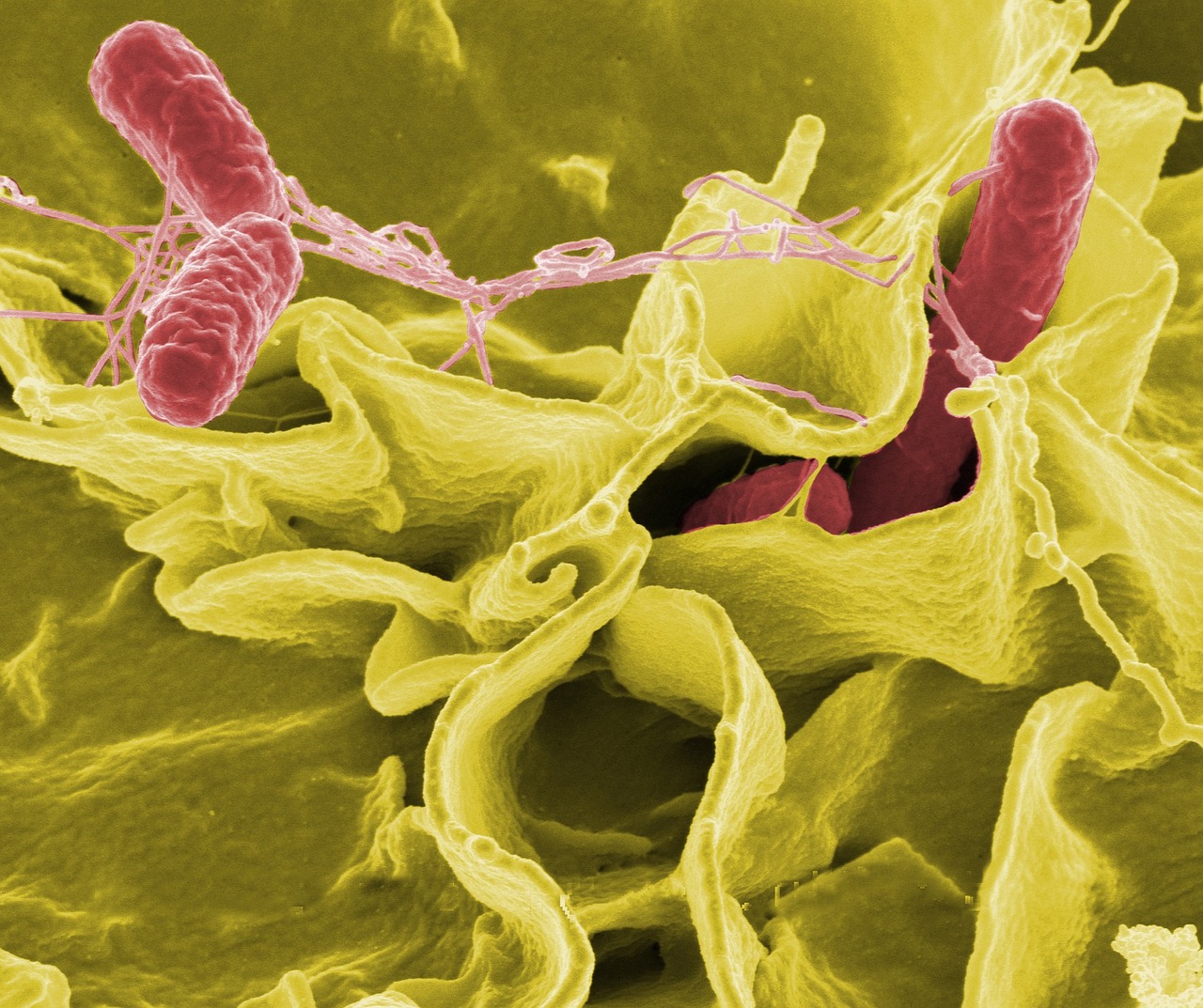
The Experiment with Cowpox
Edward Jenner's groundbreaking experiment with cowpox is often regarded as the moment that changed the course of medicine forever. Imagine a world where smallpox was a persistent and deadly threat, claiming countless lives and leaving survivors with disfiguring scars. In this dire landscape, Jenner emerged as a beacon of hope. He observed that milkmaids who had contracted cowpox, a disease much milder than smallpox, seemed to be immune to the latter. This observation sparked a revolutionary idea in Jenner's mind: could exposure to cowpox actually protect against smallpox?
In 1796, Jenner decided to put his theory to the test. He took material from a cowpox sore on the hand of a milkmaid named Sarah Nelmes and used it to inoculate an eight-year-old boy named James Phipps. After a few weeks, Jenner exposed Phipps to smallpox, and to his amazement, the boy showed no signs of infection. This simple yet profound experiment laid the groundwork for the concept of vaccination, demonstrating that a less harmful virus could indeed confer immunity against a more dangerous one.
This experiment wasn't just a stroke of luck; it was the culmination of Jenner's keen observations and meticulous methods. He carefully documented every step of his process, ensuring that his findings could be replicated and verified. Jenner's work was not just about cowpox and smallpox; it was about understanding the immune system and how it could be manipulated to protect against disease. His approach was revolutionary, as it introduced the idea of using a safer pathogen to build immunity, a principle that underpins modern vaccination practices today.
However, it’s important to note that Jenner's experiment was not without its critics. Many in the medical community were skeptical of his findings, questioning the ethics of experimenting on a child and the validity of his conclusions. Despite this, Jenner's determination and the overwhelming evidence from his experiments eventually led to wider acceptance of vaccination. His work paved the way for future research and developments in immunology, ultimately saving millions of lives.
In summary, Jenner's experiment with cowpox was a pivotal moment in medical history. It not only introduced the concept of vaccination but also laid the foundation for the scientific understanding of how our immune system works. The implications of his work are still felt today, as we continue to build upon his legacy to develop vaccines that protect against a myriad of diseases.
- What was the significance of Jenner's experiment with cowpox?
The experiment demonstrated the principle of vaccination, showing that exposure to a less harmful virus could provide immunity to a more dangerous one. - How did the public react to Jenner's findings?
Initially, there was skepticism and resistance from both the medical community and the public, but over time, his work gained acceptance and led to widespread vaccination practices. - What impact did Jenner's work have on modern medicine?
Jenner's contributions laid the groundwork for immunology and vaccination, influencing countless public health initiatives and saving millions of lives globally.

The Development of the Smallpox Vaccine
Edward Jenner's journey towards developing the smallpox vaccine was nothing short of revolutionary. In a world plagued by the **devastating effects of smallpox**, Jenner set out to find a solution that would not only protect individuals but also safeguard entire communities. His meticulous approach to experimentation and observation laid the groundwork for a significant breakthrough in medical history.
To understand Jenner's process, it's essential to recognize the scientific principles he employed. Jenner hypothesized that exposure to a less virulent strain of a disease could provide immunity against a more deadly one. This idea was rooted in the practice of **variolation**, where individuals were intentionally infected with smallpox to build immunity. However, this method was risky and often led to severe complications or even death.
In 1796, Jenner conducted his famous experiment involving cowpox, a disease that affected cows and was known to provide immunity against smallpox. He took material from a cowpox sore on the hand of a milkmaid named Sarah Nelmes and inoculated an eight-year-old boy named James Phipps. After the boy developed mild symptoms, Jenner exposed him to smallpox. Remarkably, James did not contract the disease, demonstrating the effectiveness of the cowpox inoculation.
Jenner's method can be summarized in these key steps:
- Observation: Noticing that milkmaids who contracted cowpox seemed immune to smallpox.
- Experimentation: Inoculating a healthy child with cowpox material.
- Verification: Exposing the child to smallpox to confirm immunity.
This groundbreaking experiment was not just a stroke of luck; it was the culmination of **careful observation and scientific inquiry**. Jenner meticulously documented his findings, presenting them to the medical community and the public. His work was published in 1798, in a detailed account titled "An Inquiry into the Variolae Vaccinae," which laid the foundation for what would become known as vaccination.
Jenner's development of the smallpox vaccine was a turning point in the fight against infectious diseases. It introduced the concept of vaccination, which has since evolved into a cornerstone of public health. His innovative approach not only saved countless lives but also inspired future generations of scientists and medical professionals to explore the potential of vaccines against various diseases.
As vaccination practices evolved over the years, Jenner's principles remained at the core of immunology. The smallpox vaccine was further refined and eventually led to the **global eradication of smallpox** in 1980, a landmark achievement in public health. Jenner’s legacy continues to influence modern vaccination strategies, ensuring that his contributions are recognized and celebrated worldwide.
| Question | Answer |
|---|---|
| What was Edward Jenner's main contribution to medicine? | He developed the first successful smallpox vaccine, which laid the foundation for modern vaccination practices. |
| How did Jenner's vaccine work? | Jenner's vaccine used cowpox, a less harmful virus, to confer immunity against the more dangerous smallpox virus. |
| What impact did the smallpox vaccine have on public health? | The vaccine significantly reduced smallpox cases and ultimately led to the global eradication of the disease in 1980. |

Public Reception and Initial Skepticism
When Edward Jenner introduced his groundbreaking smallpox vaccine, one might assume that people would welcome it with open arms, eager to protect themselves from a disease that had claimed countless lives. However, the reality was quite different. The public reception was mixed, and initial skepticism reigned supreme. Many were hesitant to embrace this new method of disease prevention, primarily because it challenged the conventional wisdom of the time.
Imagine a world where smallpox was a common threat, a shadow lurking over every household. Despite the horrors it inflicted, the idea of injecting oneself with material from a cowpox sore seemed bizarre, even alarming. People were understandably concerned about the safety and efficacy of Jenner's method. Questions buzzed around like bees at a picnic: “What if it doesn’t work?” or “What if it makes me sick?” The fear of the unknown is a powerful deterrent, and Jenner faced an uphill battle in convincing the public of the benefits of vaccination.
Furthermore, the medical community was not entirely on board either. Many physicians viewed Jenner's work with skepticism, often dismissing it as a mere curiosity rather than a legitimate medical advancement. Some even went so far as to label it as quackery. The prevailing belief was that diseases could only be treated once contracted, not prevented beforehand. This mindset created a significant barrier for Jenner, who was not only advocating for a new approach but also challenging the established norms of medical practice.
Despite the skepticism, Jenner found allies among some progressive thinkers and physicians who recognized the potential of his work. These early supporters played a critical role in promoting the vaccine, organizing demonstrations, and sharing success stories. For example, in 1798, Jenner published his findings in a book titled An Inquiry into the Variolae Vaccinae, which detailed his experiments and the results. This publication was instrumental in spreading awareness and garnering support.
However, the journey was still fraught with challenges. Opposition groups emerged, fueled by fear and misinformation. Some people believed that vaccination could lead to the transmission of animal diseases to humans, further complicating public perception. The societal divide became evident, with some communities embracing the vaccine while others remained staunchly against it. To illustrate this divide, consider the following table:
| Community Response | Reaction to Vaccination |
|---|---|
| Supportive | Embraced vaccination, organized vaccination campaigns |
| Skeptical | Questioned safety, spread rumors about side effects |
| Opposed | Refused vaccination, rallied against it |
As time passed and more individuals experienced the benefits of vaccination firsthand, public perception began to shift. Success stories of those who avoided smallpox due to vaccination started to circulate, gradually dispelling the myths and fears surrounding the procedure. The initial skepticism transformed into acceptance, and Jenner's smallpox vaccine became a cornerstone of public health initiatives.
In conclusion, the public reception of Jenner's work was a complex tapestry of fear, skepticism, and eventual acceptance. His journey illustrates the challenges faced by pioneers in medicine, where innovation often meets resistance. Yet, through perseverance and the support of early advocates, Jenner's smallpox vaccine laid the groundwork for modern vaccination practices, ultimately saving countless lives and transforming public health.
- What was the initial reaction to Jenner's vaccine? The initial reaction was mixed, with significant skepticism and fear among the public and the medical community.
- How did Jenner convince people to accept vaccination? Jenner published his findings and garnered support from progressive thinkers who recognized the vaccine's potential.
- What were some concerns about the safety of vaccination? Many feared that vaccination could lead to the transmission of animal diseases and questioned its overall efficacy.

Long-term Effects on Public Health
Edward Jenner's groundbreaking work in vaccination has had profound and lasting effects on public health, shaping the way we approach disease prevention even today. Before Jenner, smallpox was an invisible enemy that claimed countless lives, instilling fear in communities worldwide. His innovative approach not only led to the development of the smallpox vaccine but also laid the groundwork for the field of immunology. The ripple effects of his work are still felt, as vaccination programs have become a cornerstone of public health strategies globally.
One of the most significant long-term effects of Jenner's work is the near-eradication of smallpox, a disease that once ravaged populations. Thanks to his pioneering methods, the World Health Organization (WHO) launched an intensive global smallpox eradication campaign in the 20th century. By 1980, smallpox was declared eradicated, marking one of the greatest achievements in public health history. This success story serves as a testament to the power of vaccination and the importance of scientific innovation.
Moreover, Jenner's principles of vaccination have been applied to combat numerous infectious diseases beyond smallpox. Vaccination strategies have evolved, leading to the development of vaccines for diseases such as polio, measles, and influenza. These vaccines have drastically reduced the incidence of these diseases, saving millions of lives and preventing countless cases of morbidity. The impact is not just quantitative; it has also improved the quality of life for individuals and communities, allowing children to grow up free from the fear of debilitating diseases.
Additionally, Jenner's work has fostered a culture of research and development in the field of vaccines. The scientific community has built upon his foundational principles, leading to the creation of new vaccines that target emerging infectious diseases. For instance, the rapid development of mRNA vaccines for COVID-19 is a direct result of the principles established by Jenner. This adaptability and innovation in response to public health crises demonstrate the enduring influence of Jenner’s legacy.
In summary, the long-term effects of Edward Jenner’s contributions to public health are monumental. They not only revolutionized the way we prevent diseases but also instilled a sense of hope for future generations. As we continue to face new health challenges, the principles of vaccination pioneered by Jenner remind us of the importance of science, collaboration, and public health initiatives. His legacy is a beacon guiding us toward a healthier future.
- What was Edward Jenner's main contribution to medicine? Jenner is best known for developing the smallpox vaccine, which was the first successful vaccine and laid the foundation for immunology.
- How did the smallpox vaccine impact global health? The smallpox vaccine led to the eradication of smallpox, a disease that caused millions of deaths, and set a precedent for vaccination programs worldwide.
- What are some diseases that vaccines have been developed for since Jenner's time? Vaccines have been developed for various diseases, including polio, measles, rubella, hepatitis B, and influenza, significantly reducing their prevalence.
- How does modern vaccination relate to Jenner's work? Modern vaccination practices build on Jenner's foundational principles, utilizing advanced technology and research to create effective vaccines for new and existing diseases.

Legacy and Recognition
Edward Jenner's contributions to the field of medicine are nothing short of monumental. His pioneering work in developing the smallpox vaccine not only saved countless lives but also laid the groundwork for the entire field of immunology. Today, Jenner is widely celebrated as the father of vaccination, a title that reflects the profound impact he has had on public health around the globe. His innovative spirit and relentless pursuit of knowledge serve as an inspiration for scientists and healthcare professionals alike.
In recognition of his groundbreaking achievements, Jenner has been honored in numerous ways. Statues have been erected in his memory, and various institutions have been named after him, signifying the respect and admiration he commands in the medical community. For instance, the Edward Jenner Museum in Berkeley, Gloucestershire, stands as a testament to his legacy, showcasing his life, work, and the historical context of vaccination. It serves not only as a museum but also as an educational center that continues to inform the public about the importance of vaccines.
Moreover, Jenner's work has been commemorated through various awards and honors. The Jenner Institute, part of the University of Oxford, is dedicated to vaccine research and development, ensuring that his legacy lives on in modern scientific endeavors. The institute has played a crucial role in the development of vaccines for diseases such as malaria and Ebola, further extending Jenner's influence into the 21st century.
Additionally, Jenner's impact is reflected in global health initiatives that prioritize vaccination. Organizations like the World Health Organization (WHO) have launched extensive vaccination campaigns aimed at eradicating diseases, echoing the principles established by Jenner over two centuries ago. The successful eradication of smallpox in 1980 is a direct outcome of the vaccination strategies he pioneered, showcasing the long-lasting effects of his work.
In educational settings, Jenner's contributions are often included in curricula around the world, illustrating the significance of his work in the history of medicine. Students learn about the ethical implications, scientific principles, and societal impacts of vaccination, ensuring that future generations understand the importance of immunization in public health.
Overall, Edward Jenner's legacy is a rich tapestry woven from the threads of innovation, dedication, and a commitment to improving human health. His recognition extends beyond mere accolades; it is a continuous celebration of the lives saved and the diseases prevented through vaccination. As we reflect on his contributions, we are reminded that the fight against infectious diseases is ongoing, and Jenner's vision remains as relevant today as it was in the late 18th century.
- What was Edward Jenner's most significant contribution? Jenner is best known for developing the smallpox vaccine, which was the first successful vaccine ever created.
- How did Jenner's work impact public health? His work led to the eventual eradication of smallpox and laid the foundation for modern vaccination practices, significantly reducing the incidence of various infectious diseases.
- Are there any institutions named after Edward Jenner? Yes, several institutions, including the Edward Jenner Museum and the Jenner Institute at the University of Oxford, honor his contributions to science and medicine.
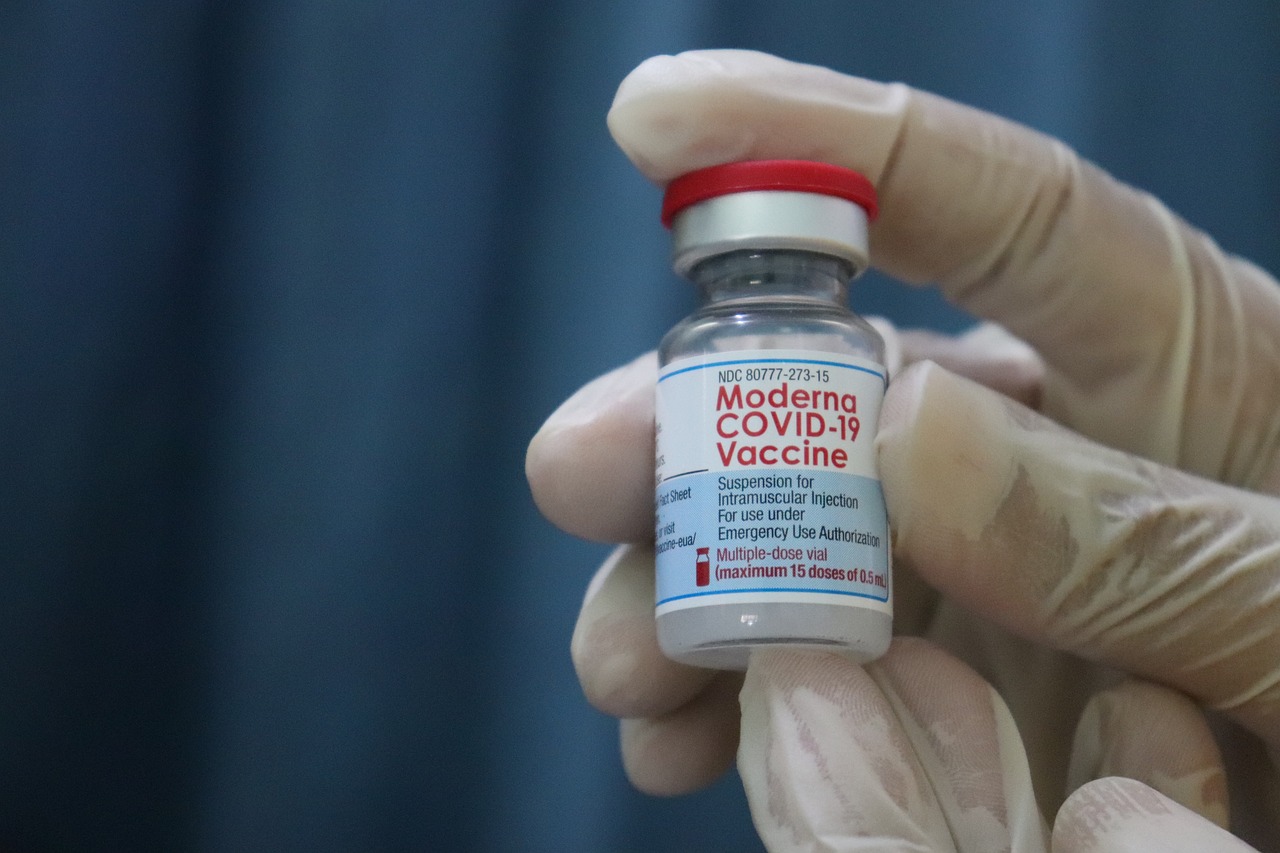
Modern Vaccination Practices Inspired by Jenner
The legacy of Edward Jenner is not just a chapter in the history books; it is a living testament to the power of innovation in medicine. His groundbreaking work on the smallpox vaccine paved the way for modern vaccination practices that we rely on today. Imagine a world where deadly diseases run rampant, and the only defense is a gamble of chance. Jenner transformed that narrative by introducing a systematic approach to immunization, which has evolved into the sophisticated vaccination protocols we see today.
In the modern era, vaccination practices have become more refined and scientifically robust, yet they still echo Jenner’s fundamental principles. Vaccines today are designed to stimulate the immune system, creating a protective response without causing the disease itself. This is akin to training for a marathon: you prepare your body to face the challenge ahead without actually running the full distance until race day. Just as Jenner used cowpox to protect against smallpox, today’s vaccines often employ weakened or inactivated forms of viruses, or even pieces of the virus, to achieve immunity.
Furthermore, advancements in technology have allowed for the development of various types of vaccines, including:
- mRNA Vaccines: A revolutionary approach that uses messenger RNA to instruct cells to produce a harmless piece of the virus, triggering an immune response.
- Viral Vector Vaccines: These vaccines use a modified version of a different virus to deliver important instructions to our cells.
- Protein Subunit Vaccines: These contain harmless pieces of the virus (proteins) instead of the entire germ, prompting a strong immune response.
Jenner’s influence is also evident in public health campaigns that promote vaccination as a critical tool for disease prevention. Health organizations worldwide emphasize vaccination not only as a personal health choice but as a communal responsibility. This collective approach mirrors Jenner’s initial efforts, which aimed to protect entire populations from smallpox. Today, vaccines are a cornerstone of public health strategies, contributing to the eradication of smallpox and the control of other infectious diseases.
Moreover, the ethical considerations surrounding vaccination have evolved, yet the core message remains: the benefits of vaccination outweigh the risks. Public health campaigns often address concerns and misinformation, ensuring that communities are well-informed and prepared to embrace vaccination as a vital part of their health regimen. This proactive stance is reminiscent of Jenner's own challenges in gaining acceptance for his revolutionary ideas.
In conclusion, the modern landscape of vaccination is a direct descendant of Edward Jenner’s pioneering spirit. His innovative thinking not only saved countless lives during his time but continues to inspire current and future generations of medical professionals. The principles he established have been the framework for ongoing research and development in immunology, demonstrating that one man's vision can indeed change the world.
1. How did Edward Jenner's work lead to the eradication of smallpox?
Jenner's introduction of the smallpox vaccine in 1796 laid the groundwork for a global vaccination campaign that ultimately led to the complete eradication of the disease in 1980.
2. What are the different types of modern vaccines?
Modern vaccines include mRNA vaccines, viral vector vaccines, and protein subunit vaccines, each employing different methods to stimulate an immune response.
3. Why is vaccination important for public health?
Vaccination helps prevent the spread of infectious diseases, protects vulnerable populations, and contributes to herd immunity, which is essential for community health.
Frequently Asked Questions
- Who was Edward Jenner?
Edward Jenner was an English physician and scientist who is best known for developing the smallpox vaccine, the world's first vaccine. His innovative work laid the foundation for the field of immunology and has saved countless lives.
- What was the significance of Jenner's cowpox experiment?
Jenner's cowpox experiment was groundbreaking because it demonstrated that exposure to a less harmful virus (cowpox) could provide immunity against a more dangerous one (smallpox). This principle of vaccination was revolutionary and changed the way diseases were prevented.
- How did the public initially react to Jenner's vaccine?
Initially, there was skepticism and resistance from both the medical community and the public regarding Jenner's vaccine. Many were unsure about the safety and efficacy of the new method of vaccination, reflecting a common challenge faced by pioneers in medicine.
- What were the long-term effects of Jenner's work on public health?
Jenner's contributions significantly reduced the incidence of smallpox and laid the groundwork for modern vaccination practices. His work not only transformed public health but also paved the way for future vaccines, ultimately leading to the eradication of smallpox in 1980.
- How is Jenner recognized today?
Edward Jenner is widely recognized as the father of immunology. Numerous honors and memorials celebrate his legacy, and his work continues to be a cornerstone of vaccination practices worldwide.
- What modern vaccination practices are inspired by Jenner?
Today's vaccination strategies have evolved significantly but still build upon Jenner's pioneering principles. Vaccines for various diseases are developed using similar concepts, emphasizing the importance of immunization in global health initiatives.


